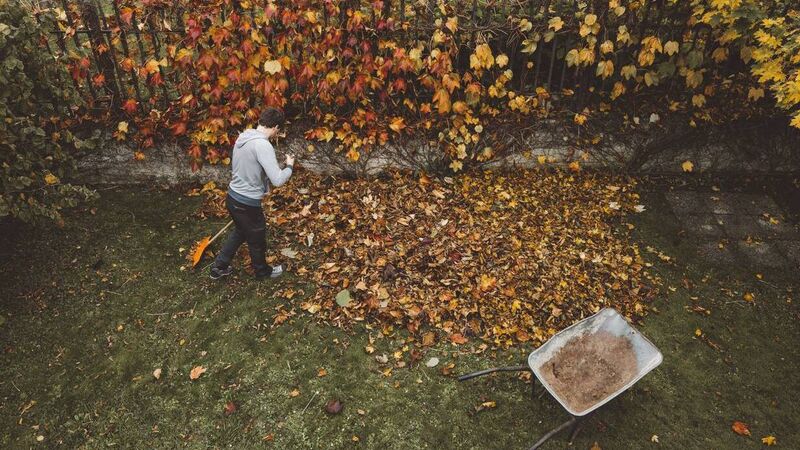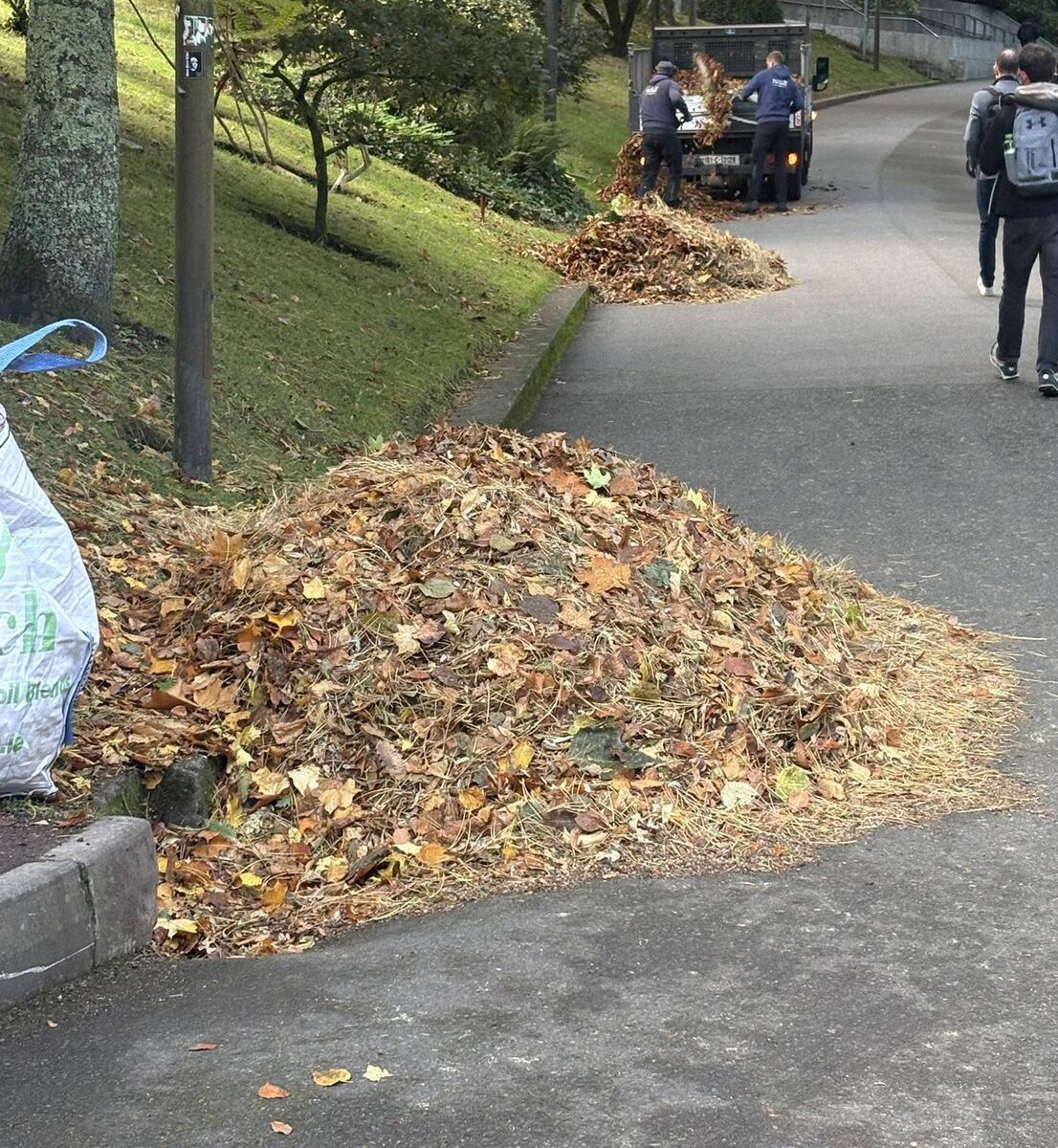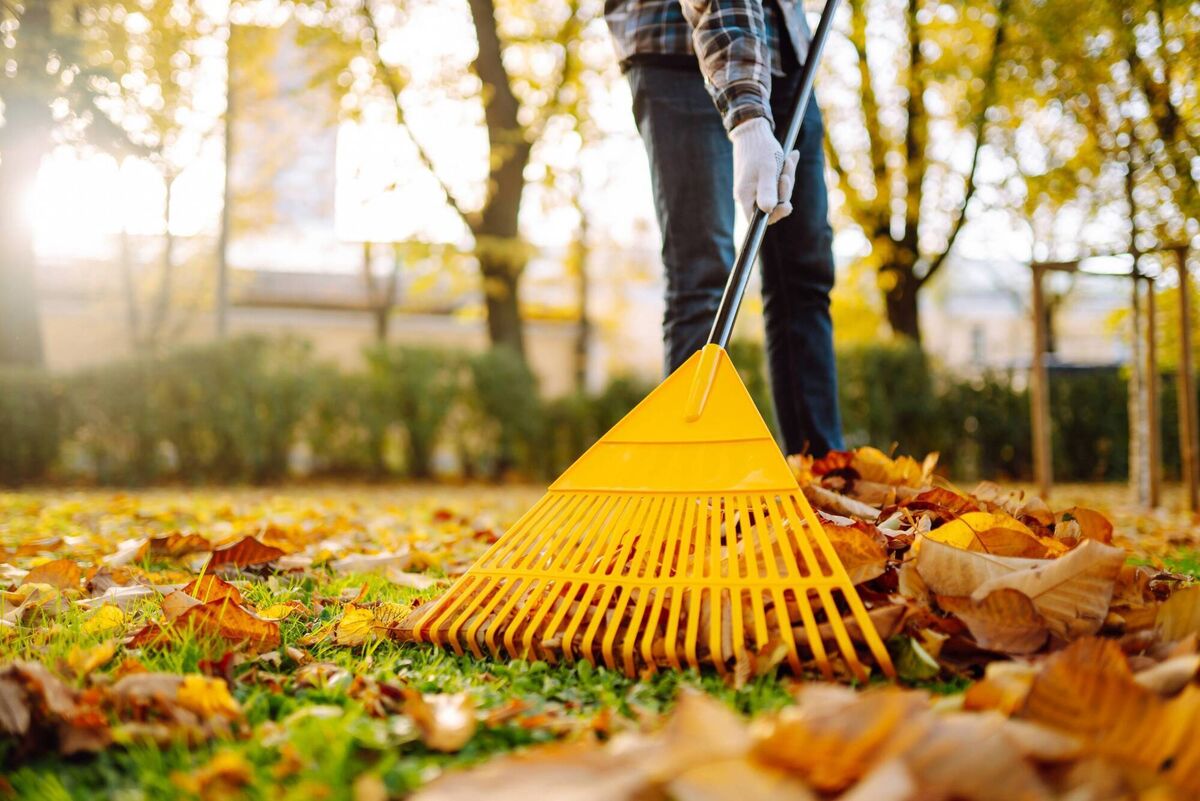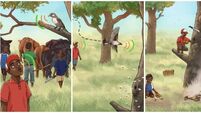Rake expectations: should we be picking up leaves at all?

Dr Michelle McKeown: "A thin scattering of leaves is nature’s own mulch, retaining moisture and feeding the soil as it breaks down. But leave them in thick, soggy mats and they’ll smother grass, foster mould, and block sunlight from early bulbs like snowdrops and crocuses. In other words, moderation really is the secret to a happy garden."
Every autumn, as pavements turn into patchworks of gold and russet, Irish gardens begin their annual choreography: rakes emerge, leaf blowers roar, and compost bins swell with what we call 'waste'. Yet there’s a growing chorus of environmental voices urging us to drop the rake and let nature take its course.
So, who’s right, the tidy gardener or the lazy ecologist?
As it turns out, both have a point.
Leaves, after all, aren’t litter. They’re the forest’s own recycling system, a slow-release nutrient pack designed to feed soil life and shelter small creatures through the colder months. When they decompose, they release essential nutrients, improve soil structure, and even help lock away a little carbon.
Beneath that unassuming carpet of decay lives an entire community of worms, beetles, fungi, and countless other decomposers quietly turning last summer’s canopy into next spring’s fertility. It’s one of nature’s most elegant circular economies, and one we often disrupt with a rake and a bin bag.
In the wild, leaf litter acts as a protective blanket, insulating the soil against frost and preventing erosion during winter rains. In gardens and parks, it does much the same, holding moisture and sheltering roots. Butterflies and moths, including Ireland’s brimstones, commas, and angle shades, often overwinter in cocoons tucked within piles of fallen leaves. Remove those leaves too early, and you risk wiping out next year’s fluttering generation before they ever emerge.
Petrol-powered leaf blowers are a go-to for many landscaping crews in Ireland, but these machines are shockingly dirty. US tests show that running a typical two-stroke leaf blower for just one hour churns out smog-forming pollutants (such as volatile organic compounds and nitrogen oxides) equivalent to driving a modern car roughly 1,770 kilometres — about twice the distance of a round trip from Cork to Belfast. Older models can be even worse, out-polluting cars by up to 300 times for certain emissions.
Then there’s the noise. The ear-splitting roar scatters robins, blackbirds, and any hope of peace. A rake, by contrast, is silent, zero-emission, and a great workout. With Ireland pushing for greener solutions, swapping petrol for electric-powered blowers or a trusty rake could keep the air cleaner and garden birds happier.
But before we romanticise a world of uncollected leaves, there’s a soggy twist in the tale. When leaves pile up on roads, driveways, or in gutters, they become a genuine environmental headache. Rainwater leaches nutrients from decomposing leaves, washing them into drains and rivers. That can fuel algal blooms, suffocate aquatic life, and degrade water quality.
A study by the US Geological Survey found that removing leaves from urban streets before rainstorms reduced phosphorus pollution by more than 80%. Given Ireland’s own struggles with nutrient runoff (from agriculture, gardens, and wastewater alike) those findings are more than a little relevant. If your leaves end up in the storm drain, they’re no longer part of nature’s nutrient cycle; they’re part of the pollution problem.
There’s also the matter of lawns and flowerbeds. A thin scattering of leaves is nature’s own mulch, retaining moisture and feeding the soil as it breaks down. But leave them in thick, soggy mats and they’ll smother grass, foster mould, and block sunlight from early bulbs like snowdrops and crocuses. In other words, moderation really is the secret to a happy garden.

So, what’s the environmentally sound approach? Think of it as the 'Goldilocks method'... not too much, not too little. Rake or sweep leaves off hard surfaces and away from drains, but leave a layer beneath trees, hedges, and in flowerbeds where they’ll do good.
If you have too many, resist the temptation to bin them. Instead, gather them in a corner to make leaf mound: a rich, crumbly compost beloved by gardeners. It takes patience, decomposing slowly over a year or two, but the result is worth the wait: dark, moisture-retentive material that improves any soil.
Avoid shredding all your leaves with a mower, tempting as it may be. Many insects spend winter curled inside those leaves... the blades do them no favours. If you can, delay your big tidy-up until late spring when overwintering wildlife has had time to stir. By then, the wrens, robins, and hedgehogs that rummaged through your leaf piles will have done a fair bit of composting for you.
It’s also worth mentioning that a little untidiness goes a long way. Gardeners once prized immaculate lawns as a badge of honour, but the trend is shifting. Across Ireland, more people are embracing messy gardening, leaving patches of wildflowers, longer grass, and yes, a few leaf piles, to help struggling pollinators. Councils such as Fingal have adopted 'Leave the Leaves' campaigns, recognising that a slightly scruffy verge can do wonders for local biodiversity.

In truth, the rake-versus-leaf debate isn’t about laziness or labour, it’s about understanding that even the smallest domestic habit connects to larger ecological cycles. Each leaf that falls is a fragment of carbon, water, and life in motion. Treat it as rubbish, and you break that cycle. Treat it as a resource, and you become part of it.
So, this autumn, by all means tidy where you must. Sweep the driveway, clear the drains, make the neighbours happy. But leave a few leafy corners for the worms, beetles, and the sleepy hedgehog curled beneath the pile. Because when spring arrives, and your garden hums with life, you’ll have nature’s gratitude (and a much lighter carbon footprint) to show for it. After all, nature has been composting far longer than we’ve been complaining about it.









